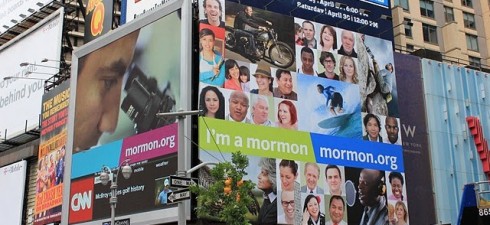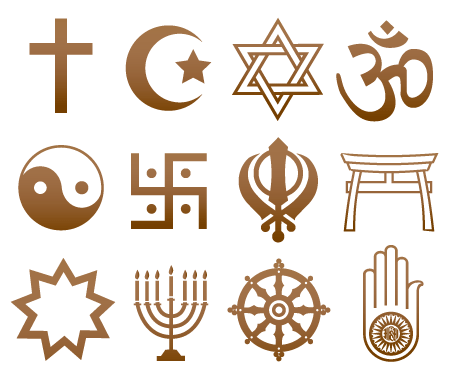[Heidi, a fellow cheap-seater, still has the floor.]
In an earlier Cheap Seats post, Brent asked “Why do we spend so much time telling each other what spiritual experiences mean?” I think it’s an important question and it’s one I keep coming back to. Anyone who has read my column knows the reverence I have for stories and the meaning that I take from narratives in all forms. I love reading stories, I love hearing and watching stories and I love telling stories.
I also love the narratives of religion, both the narratives I grew up with and the ones I’ve learned from other traditions. My favorite part of any service has always been reading the scriptures and hearing the heartfelt stories of others. But, of course, telling stories isn’t exclusive to religious life, it’s an inextricable part of being human. The poet Mary Oliver wrote, “Instructions for living a life: Pay attention. Be astonished. Tell about it.”
Of course, religion is about much more than narrative. Religion is a collection of culture, belief systems, and worldviews. Most religions have narratives, symbols, traditions and histories that explain the origin of life or the universe. The morality, ethics and rules of a religion arise from these stories and ideas. However over time, the narratives can become calcified, they harden into the way things are.
In a provocative essay about the lessons we’ve learned from 9/11, writer Steve Almond wrote something that struck me very powerfully, especially when it’s considered in the context of religion:
One of the duties of the artist — not the only duty, but a central one — is to impel people to imagine the complexity of thought and feeling inside another person. Art complicates moral action, because we have to accept that other people matter, that their hardship and suffering, even their rage and sorrow, are, to some extent, our responsibility. Propaganda has the opposite aim: it is intended to simplify moral action. People get to disregard the humanity of others. This makes them easier to ignore, deport, imprison torture, enslave, and kill.
Religion contains art and propaganda, often mingled together; indeed huge periods of art history are studies in religious propaganda. On Sundays the art and propaganda are mixed in more humble ways. We read the scriptures, we liken them to ourselves. We hear the testimonies of others and we imagine ourselves in their place, maybe we think about how we are the same or different. It is difficult to imagine how an organization the size of the church, especially one that proselytizes, could exist without any propaganda, hence all the ad campaigns, pass along cards, CTR rings and the giveaway Book of Mormon. But I’m a Mormon aside, the church’s greatest tool of propaganda is correlation. Ostensibly driven by a desire to standardize the teachings and facilitate the spread of the church to many different cultures, we can now boast that saints all over the world are sitting through and teaching the same lessons. But correlation, for better and worse, is a force for simplification.
What happens when we tidy up our messy human narratives, trimming away unflattering facts and doing away with moral ambiguity? There might be art in reading scripture or singing the hymns, but the propaganda of correlation is careful to tell us how to interpret the narratives. When we read from manuals that mention only one of Joseph Smith’s wives or gloss over uncomfortable parts of our history, what happens to our moral imagination? Does it atrophy without the opportunity to wrestle with ambiguity and conflict? And if we stop using our moral imagination, what happens to our kindness, our compassion? Does that atrophy as well?
[Last Post: 11 How Do You Solve A Problem Like Modesty (Guest)]


Very provocative Heidi. It’s also easy to confuse propaganda with myth. Myths use specific cultural symbols to speak universal truths, whereas propaganda uses stories to justify the means and ends of a culture’s ambitions.
Ed, well said.
I really like this. Does our religion compel us to “imagine the complexity of thought and feeling inside another person”? Should it? If it doesn’t, why doesn’t it? All great questions to ask. I’m going to be thinking about this for a few days. Correlation=simplification=loss of moral imagination. . . I also can’t help but wonder what effect outsourcing life’s great questions to the church has on our moral imagination. If we don’t ask those questions ourselves–or try to answer them for ourselves–then it’s easy to lose sight of how those basic questions unite us. If we are so preoccupied with determining whether or not the “church is true” that we don’t have time (or the imagination) to struggle with life’s big questions ourselves, but instead just copy down the standard answers to these questions from our correlated manuals, where doesn that leave us as individuals?
I think the injunction to be Christ like, to treat others as we would like to be treated, does compel us to “imagine the complexity of thought and feeling inside another person” and I think there are a great many people in and out of the church who take this injunction seriously and have well-developed moral imaginations. But really loving others and feeling our connection to them requires flexibility and a fluidity that can easily come into conflict with the standards or correlation (or substitute the letter of the law). I think the tension between the needs of individuals and the needs of the organizations and communities they belong to is a fact of life. I don’t think we can do away with the tension, but I think it must be examined.
And, this might be a bit of a tangent, but I wonder if something like Prop 8, at its root, is a failure of moral imagination, a failure to respect the thoughts and feelings of others. In the Follow the Prophet propaganda that surrounded Prop 8, I can see how the rhetoric simplified the issue and relied on disregarding the humanity of the LBGT community.
I really loved this, Heidi. It dovetails in nicely with my current reading of “The Evolution of God”. Thanks.
Tom
Heidi, I love the Steve Almond quote……Wow!!! I believe that the correlation movement started by Harold B. Lee and Marion G. Romney had some noble aims, but it pursues efficiency ahead of effectiveness. When I read The Mormon Corporate Empire back in the 80’s, the book spoke of how the LDS Church destroys culture as it spreads internationally. I don’t recall the authors directly attributing that to the correlation movement, but as someone inside the culture, it is easy to connect the dots. Correlation is about simplication, and it is also – despite denials to the contrary – about concentration of power at HQ. They can talk about decentralization all they want, but when you cannot locally make a classroom key, it looks and smells like centralization.
I don’t want to see correlation thrown-out, however. I would like to see the Church pursue “effective,” and then “efficient,” in that order. Let the church in each land choose its areas of emphasis, and develop some local customs, within broad, universal parameters. The Church in Brazil should feel different than the Church in Norway, for example. Why not have different hymn books in each area of the Church. Encourage local compositions. Priesthood leaders in certain African nations need not wear white shirts and ties, if that is not the local custom, Encourage local artists to create paintings, and sculptures, and then have the church purchase them with the rights to mass re-produce for display in meetinghouses in that area. Such allowances for diversity would likely strengthen the aims of correlation, ironically.
Richard, I love your ideas for allowing each community to “choose its areas of emphasis and develope some local customs.” I think that recognizing and honoring the plurality of the church community (and, in fact, the world) would hugely benefit the church. However, I’m curious to know more about what you mean by “effective” and “efficient.” What would “effective” correlation look like to you?
I love your ideas as well. It seems so common sense. Why do we need to impose midwestern, middle class, U.S., multi-generational Mormonism on the world?
Question–what are the “aims of correlation,” in your mind?